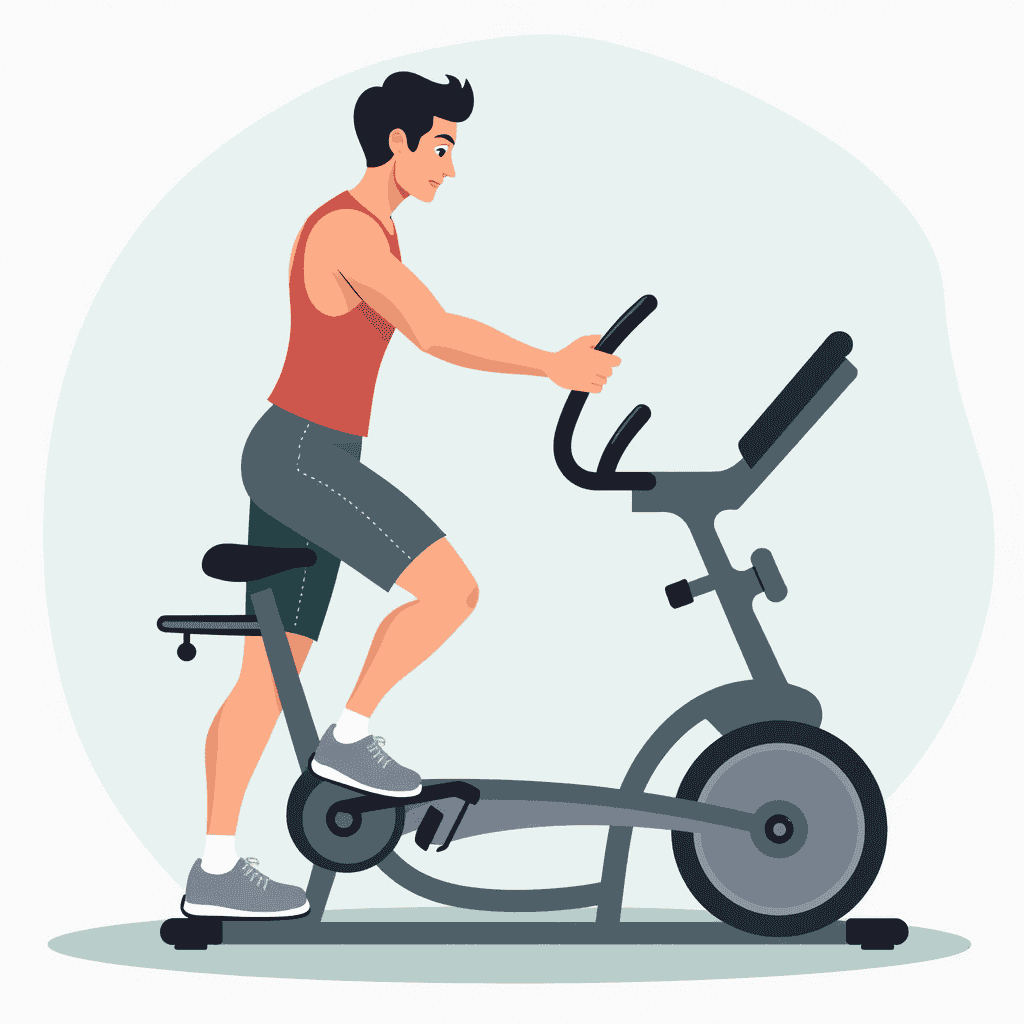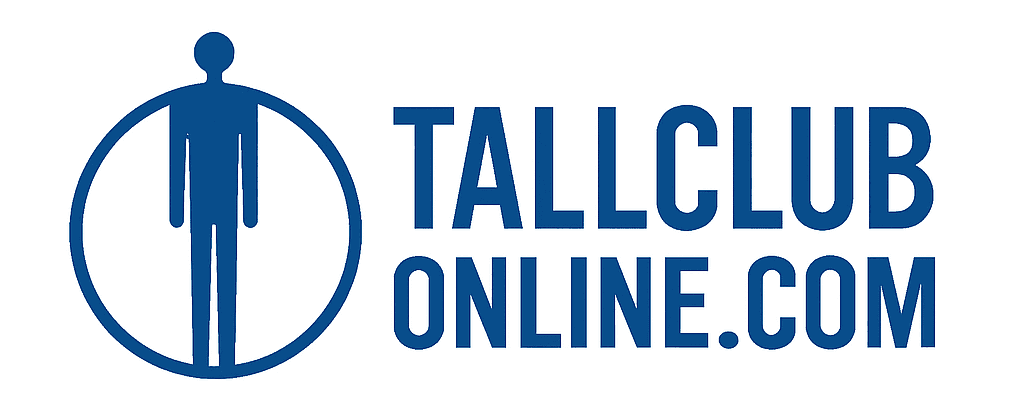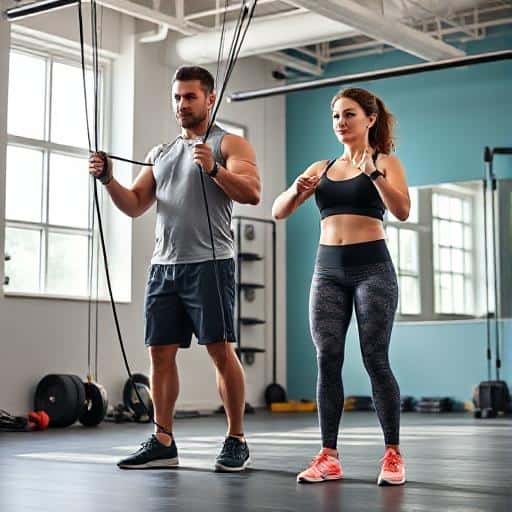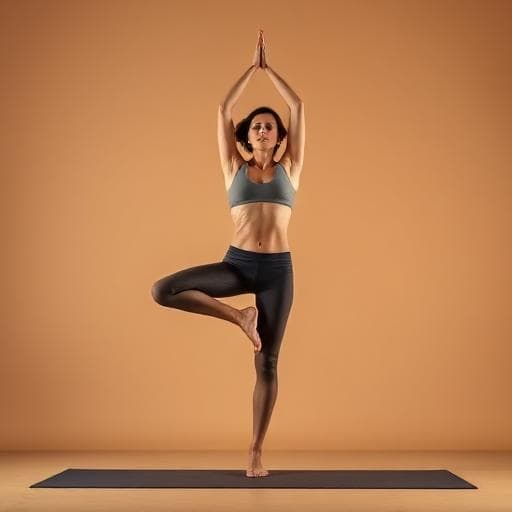Cardio for Tall People: How to Protect Knees, Hips, and Spin

Cardio exercise is essential for maintaining overall health, improving heart function, and burning calories. For tall individuals, however, certain considerations need to be made when it comes to cardio routines. The longer limbs, height, and unique biomechanics of tall bodies can put additional stress on the knees, hips, and spine during high-impact cardio exercises.
This article will focus on how tall people can protect their joints and optimize their cardio workouts. By adopting proper techniques, adjusting exercises, and incorporating joint-friendly strategies, tall individuals can enjoy the many benefits of cardio without risking injury.
Why Cardio is Important for Tall People
Just like anyone else, tall individuals need cardio to stay healthy. It improves cardiovascular health, enhances endurance, and helps maintain an active lifestyle. However, due to the length of the limbs, tall individuals are often at a higher risk of experiencing strain on their joints, especially when doing high-impact exercises such as running, jumping, or even cycling.
The good news is that with proper adjustments and mindful techniques, cardio can be both effective and safe for tall bodies.
1. Focus on Low-Impact Cardio
Tall individuals may benefit more from low-impact cardio exercises. These exercises minimize the strain on the knees, hips, and spine, while still providing an excellent workout.
Recommended Low-Impact Cardio Exercises:
Elliptical Trainer: The elliptical provides a full-body workout while being gentle on the joints. The gliding motion reduces the impact on the knees and hips, making it an ideal choice for tall individuals.
Swimming: Water-based exercises are incredibly joint-friendly. Swimming provides an excellent full-body workout, strengthening muscles while minimizing impact.
Cycling: Whether on a stationary bike or on the road, cycling offers a low-impact way to improve cardiovascular health without stressing the knees or hips.
Rowing: Rowing machines are another low-impact cardio option that engages the entire body. It helps build strength in the legs, core, and upper body, while being gentle on the joints.
By focusing on these low-impact exercises, you can still get an intense cardio workout without risking damage to your knees or hips.
2. Proper Posture is Key to Preventing Strain
Maintaining proper posture during cardio is essential to avoid injury. Tall individuals, with their long spines and limbs, may be more susceptible to poor posture, which can lead to back and neck strain.
Posture Tips for Tall People During Cardio:
Stand tall: Whether you’re walking, jogging, or cycling, ensure your back is straight and your shoulders are pulled back. Avoid slouching, as this can put unnecessary stress on the lower back.
Engage your core: Always engage your core during cardio workouts to help support your spine. This will also help prevent any unnecessary strain on the lower back and hips.
Avoid overstriding: Tall individuals often have a longer stride when running or walking. While this can feel natural, overstriding can lead to knee pain and other joint problems. Try to take smaller, more controlled steps.
3. Choose the Right Footwear
Footwear plays a crucial role in protecting your knees, hips, and spine during cardio exercises. Wearing the right shoes for your specific activity can minimize shock and provide the support you need to stay injury-free.
Footwear Tips:
Running shoes with good cushioning: For tall individuals who enjoy running, choose running shoes with adequate cushioning. The added cushioning will absorb the shock, reducing the impact on your joints.
Proper arch support: If you have high arches or flat feet, look for shoes that provide the appropriate support to avoid overpronation or supination, both of which can lead to joint pain.
Athletic shoes for low-impact exercises: For low-impact cardio, such as cycling or rowing, make sure your shoes provide a firm fit and offer good arch support. This will ensure that your feet are properly supported during the workout.
4. Focus on Joint Mobility and Flexibility
Tall individuals often have greater mobility in their joints, but this can sometimes lead to instability and strain if not managed correctly. Incorporating flexibility and mobility exercises into your routine can help protect the knees, hips, and spine during cardio workouts.
Mobility Exercises to Incorporate:
Hip Flexor Stretches: Tight hip flexors are common in tall individuals, especially after prolonged sitting or running. Regularly stretching your hip flexors can improve your range of motion and reduce tension in your hips.
Quadriceps Stretching: Stretching your quads after a cardio workout can help maintain flexibility in your knees and hips.
Spinal Mobility Exercises: Incorporate exercises such as cat-cow stretches and torso rotations to improve spinal mobility, which will help protect your back during high-impact cardio.
5. Incorporating Interval Training for Cardio
Interval training is a great way to maximize the effectiveness of your cardio workout without increasing the risk of injury. By alternating between periods of high intensity and moderate intensity, interval training helps burn more calories while reducing the impact on your joints.
Benefits of Interval Training for Tall People:
Less strain: Since you’re alternating between periods of high intensity and rest, there’s less continuous strain on your joints compared to steady-state cardio like running.
Improved cardiovascular health: Interval training helps increase heart rate and improve cardiovascular function in a shorter amount of time, making it an efficient option for tall individuals.
Try incorporating exercises like cycling or elliptical into a high-intensity interval training (HIIT) routine for a joint-friendly, effective cardio workout.
6. Don’t Skip Your Warm-Up and Cool-Down
A proper warm-up and cool-down are essential, especially for tall individuals, to avoid injury and protect the joints. A dynamic warm-up prepares your body for movement, while a cool-down helps your body recover and reduces muscle stiffness.
Warm-Up and Cool-Down Tips:
Warm-up: Perform 5-10 minutes of light cardio, such as walking or slow cycling, to gradually increase your heart rate. Follow this with dynamic stretches such as leg swings, hip circles, and arm rotations.
Cool-down: After completing your cardio workout, take 5-10 minutes to cool down with slower-paced movements and static stretching. Focus on stretching your quads, hamstrings, and calves to promote flexibility and prevent tightness.
Key Takeaways
Low-impact cardio: Focus on low-impact cardio exercises like cycling, swimming, and rowing to reduce strain on your joints and spine.
Proper posture: Maintain proper posture and engage your core during cardio to protect your back and hips.
Footwear matters: Invest in the right shoes that provide cushioning and support for your cardio workouts.
Joint mobility: Include flexibility and mobility exercises to keep your joints flexible and prevent injury.
Interval training: Incorporate interval training for an effective cardio workout that minimizes stress on the joints.
FAQ: Cardio for Tall People
Q1: Can running be bad for tall people?
Running can be hard on your knees and hips, especially if you have long strides. If you enjoy running, be sure to focus on proper form, wear good running shoes, and incorporate intervals to reduce the impact.
Q2: Is swimming a good option for tall people?
Yes! Swimming is one of the best low-impact cardio exercises. It provides a full-body workout while protecting your joints and allowing for natural movement.
Q3: How often should I incorporate cardio into my routine?
For general health, aim for at least 150 minutes of moderate-intensity cardio per week. You can break this down into shorter sessions throughout the week to make it more manageable.
Q4: Do I need special shoes for low-impact cardio?
Yes! Choose shoes that provide good cushioning and arch support. For activities like cycling or swimming, make sure your footwear provides stability without being too restrictive.






